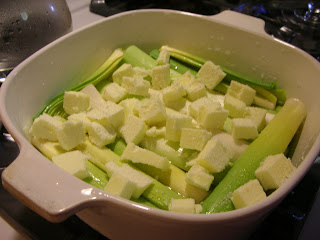So i started with a simple Pate Surcee dough, which is a basic sweet tart dough which can be used similarly to sugar cookie dough. I had it in the freezer left over from Easter. Rolled them out as you would any cookie dough and then started cutting out shapes. I had a few cutters: a dress, a wedding dress, a gingerbread man, and a baseball cap. I mostly ended up using the Regular dress and altering it with a knife to make different dresses, blouses, skirts, shirts and pants, hazmat suits and a few overalls. It was pretty simple.
If you are wondering at this point what this has to do with the rapture that was supposed to happen on the 21st, here is a brief explanation. The rapture is a highly debated theological topic, but a common thought on what would happen is that those being raptured would blink out of earthly existence and be brought to heaven. This would of course leave behind the clothing of these people. Thus, empty clothing rapture cookies. If your still not getting it, my friends got it, which was the point.
I baked off the cookies until just baked with a smidgen of browning on the bottom, and then cooled on a rack and moved on to frosting the cookies. I made a basic royal icing: egg whites and confectioners sugar. When making royal icing I almost always use pasteurized egg whites in a carton. This stuff is awesome for a 2 reasons. Its pasteurized, so its safe for children, the elderly, pregnant women and pretty much anyone who would worry about immune deficiency's. Also you can use as much or little as you want with out wasting egg yolks. (i hate to waste things) When your finished using it you can freeze the remainder of the carton until next time. You can't however use pasteurized egg whites in a carton for making meringues, angle food cake and anything that involves whipping egg whites to a foam. They simply do not whip. To make the royal icing for these cookies you whip confectioners sugar into the egg whites until smooth and well combined and at your preferred consistency. For these style of cookies I like the icing a bit runny. I generally use paste food coloring for icing, but it was late and I was tired and wanted to go to bed so i used liquid. Liquid can thin out icing, which i put into consideration when
I was making the icing. I then simply spread the icing on the cookies with a butter knife. Very unlike me to not get out my fancy tiny off set spatulas. Again, I was tired. With a slightly runny icing its best to sort of go around the outline of the cookie and then fill in the center. Another option is piping into the runny icing or just use a stiffer icing to begin with and only pipe it. When it comes to decorating cookies, there are no hard set rules. Just have fun!
I recently posted about my recent entry in a contest on BBC America in the "Where's the TARDIS?" contest. I would appreciate if you take a moment to click on the link below the picture of my entry and if you like what you see please "like" it. That is how the voting works. Thanks in advance to anyone who wishes to consider my entry!
I was making the icing. I then simply spread the icing on the cookies with a butter knife. Very unlike me to not get out my fancy tiny off set spatulas. Again, I was tired. With a slightly runny icing its best to sort of go around the outline of the cookie and then fill in the center. Another option is piping into the runny icing or just use a stiffer icing to begin with and only pipe it. When it comes to decorating cookies, there are no hard set rules. Just have fun!
This is a small sampling of the cookies. I kept them one color because I didn't want to break out the piping bags and the multi colored designs I attempted with my butter knife and index finger left a lot to be desired. My friends enjoyed them at David's birthday party and we all had one when we counted down the last 10 seconds to 6:00pm which was apparently when the rapture was scheduled to happen. everyone was still there at 6:01pm and they all enjoyed their respective cookies.
I recently posted about my recent entry in a contest on BBC America in the "Where's the TARDIS?" contest. I would appreciate if you take a moment to click on the link below the picture of my entry and if you like what you see please "like" it. That is how the voting works. Thanks in advance to anyone who wishes to consider my entry!
Happy Cooking!















